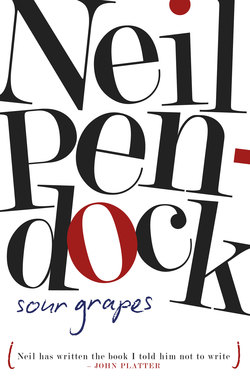Читать книгу Sour Grapes - Neil Pendock - Страница 7
На сайте Литреса книга снята с продажи.
Accidental ones
ОглавлениеSommeliers, or rather the lack of them, are one of the main differences between a South African fine-dining experience and the equivalent in France or Germany.
The approach run to the hamlet of Hattenheim, coming down from Kloster Eberbach, the medieval monastery where Umberto Eco’s The Name of the Rose was filmed, was a bit of a challenge. An early March blizzard had dumped eight inches of snow onto the Rheingau. Here, in winter, if the snow tyres lose their grip on the cobbled street, either the suitably named ICE (Inter-City Express) or the medieval German masonry gets you. If you make the bend, you come to a half-timbered Weinhaus called Zum Krug. Most German restaurants seem to be called zum something or other and this one translates as ‘zum jug’. Or zum very expensive French champagne.
Battling the blizzard from Frankfurt, we had stopped only once for a tasting at Weingut Künstler at Hochheim am Main. Of all the Rheingau Rieslings, like Rüdesheim, Johannisberg and Hochheim, Queen Victoria preferred the last, hence the generic term Hoch for a fine Rhine wine. Or, as Basil Fawlty might have put it, Vic certainly knew her Bordeaux from her claret.
The wines of Hochheim, and those of Gunter Künstler in particular, were assured of renewed British interest, with the winery displaying the FIFA logo on its Riesling labels in the run-up to the World Cup that summer. As the man pouring the wine in the Weingut put it, the aim was to offer an alternative to beer-swilling soccer hooligans (Riesling rioters, perhaps?). Quite how English supporters pronounced names like Kirchenstück, Stielweg and Domdechaney was not reported.
There are differences between a Rheingau tasting and one in Rawsonville: the German affair was free and we were offered multiple vintages of two wines – a white (the inevitable Riesling) and a red, Spätburgunder (Pinot Noir to the rest of the world). At a Cape tasting, by contrast, every possible style is available, from sparkling to racy Sauvignon Blanc, woody Chardonnay, crackerjack Shiraz, a Boere-Bordeaux blend, rustic Pinotage, the odd sticky and perhaps a port.
Faced with an interminable crawl back to Frankfurt, a pit stop at ‘zum jug’ sounded like a good idea. Did it matter that we had no reservation, that unbeknown to us this was the second day of the Rheingau Gourmet and Wine Festival or even that we were wearing jeans from Mr Price? Not at all.
The youngest diners in the restaurant by a generation or two (and undoubtedly the poorest by an even larger margin), we were ushered into a wooden-clad inner sanctum complete with quasi-religious statues of St Vincent bearing a bunch of grapes by a band of waitress Valkyries. We were clearly in for some serious business if the heft of the wine list and the number of adjectives attached to each menu option was any indication.
With all the wines grown within spitting distance, the services of a good sommelier were not just nice to have, but essential. And this one certainly knew her Hock from her Riesling. She even had a favourable opinion of South African wine, having sampled an elegant Mont du Toit red blend on the island of Sylt in the North Sea. We started with a 2002 from Georg Breuer with a delicious concentration to match the home-cured Lachs and then moved on to something a touch sweeter from Winckelmann for the calf’s liver.
The gift of a place like Zum Krug is making accidental connoisseurs out of refugees from a storm. In this age of pretentious gastronomic twaddle, with every jus now a foam and different shaped Riedels for sparkling and still water, this is the best kind of connoisseur to be.
